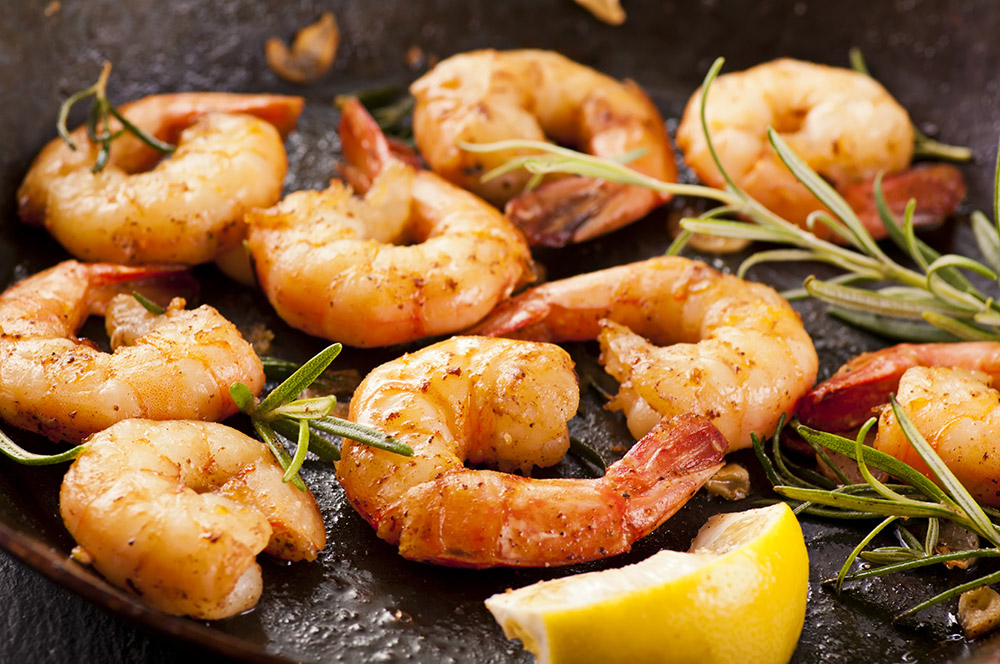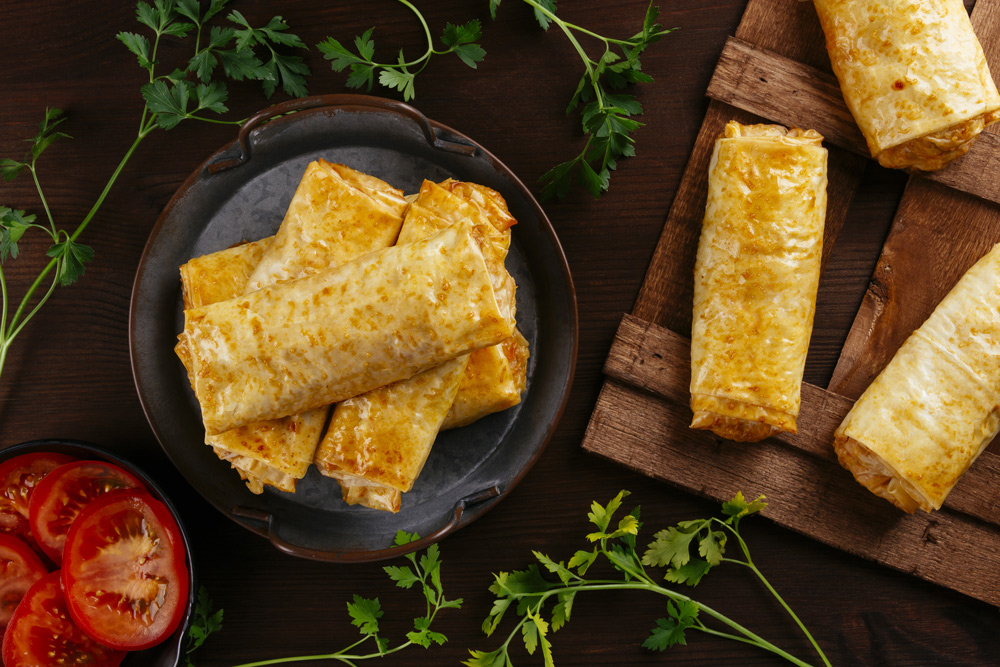These cigar-shaped filled pastries are a Turkish specialty, traditionally made with sheets of a thin dough called yufka. I find that phyllo, which is very similar to yufka, makes the perfect wrapper—it crisps up nicely and really lets the lamb filling be the star. For appetizer portions, cut the boreks into bite-sized pieces just before serving.
Ingredients
- 3 tablespoons extra virgin olive oil, plus more for the phyllo
- 2 cups diced yellow onion
- 1 1/4 pounds ground lamb
- 1 1/2 teaspoon black Urfa chili or red pepper flakes
- 1/2 teaspoon dried oregano
- 1 teaspoon cinnamon, preferably Vietnamese
- 2 teaspoons black lime
- 1 tablespoon honey
- 1/2 cup raisins, sultanas if possible, roughly chopped
- 1/2 cup unsalted pistachios, roughly chopped
- Coarse sea salt
- Freshly ground black pepper
- 2 cups plain Greek yogurt
- 3 eggs
- 4 tablespoons chopped fresh parsley
- 16-18 phyllo dough sheets, defrosted if bought frozen
- 3 tablespoons poppy seeds
Directions
Step 1
Heat the 3 tablespoons of olive oil in a large skillet. Sauté the onions until soft and golden. Add the ground lamb and cook, stirring constantly. Just before the lamb is fully cooked through, fold in the Urfa chili, oregano, cinnamon, black lime, honey, raisins, and pistachios. When the lamb is done, remove from heat and taste. Season with salt and pepper as desired. Set aside to cool to room temperature. If there’s any liquid in the pan with the lamb, use a slotted spoon to transfer the mixture to a large bowl—liquid can cause the phyllo to tear.
Step 2
Preheat your oven to 350°F. Line a large rimmed baking sheet with parchment paper or a Silpat mat. Place the yogurt in a medium bowl. In a small bowl, beat two of the eggs with a whisk or fork and then fold into the yogurt along with the parsley. Beat the remaining egg in a separate bowl and set aside next to the poppy seeds.
Step 3
Set out a large piece of parchment paper on a countertop and place a sheet of phyllo dough on top of it. Lightly brush the phyllo with olive oil (you may need to dab rather than brush if the phyllo tears easily—don’t worry about small tears because they’ll be rolled up). Quickly place a second sheet of phyllo directly on top of the first and brush with more oil. Fold the double sheet in half and spread with a thin layer of the yogurt mixture, leaving a 1-inch border on all sides. Spoon a scant half-cup of the lamb mixture in a line along one of the short sides, about 2 inches in from the short edge and from both long sides. Turn in the longer sides about 2 inches so that they cover the outer edges of the lamb mixture, and brush the exposed phyllo with more oil. Fold the short edge of phyllo over the lamb and then roll it up into a cigar-like shape, brushing the phyllo with oil as you go. Place the borek on your baking sheet and cover with a kitchen towel. Repeat with the remaining phyllo sheets and lamb, placing them at least 2 inches apart.
Step 4
Once you’ve made all the boreks, brush them with the beaten egg and sprinkle with the poppy seeds. Bake for about 35 minutes or until the phyllo is browned and crispy.
Yields 4 main-dish or 8 appetizer servings.




